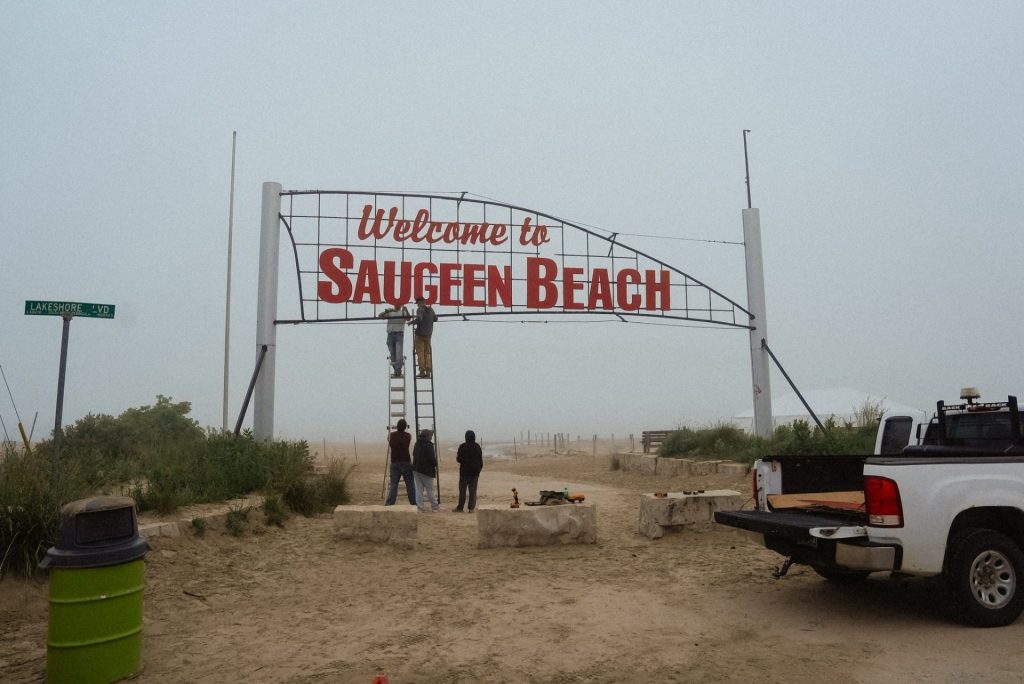Indigenous land rights: Why the Sauble Beach sign now says ‘Saugeen Beach’

The welcome sign at one of Ontario’s best-known beach towns has changed, marking a turning point in South Bruce Peninsula. As reported by Amanda Margison for CBC News, the overnight update reflects a deeper shift tied to land rights, treaties, and a decades-long legal battle.
Sign changed overnight
Reflecting a court decision last year that confirmed ownership of about 2.2 kilometres of shoreline by the Chippewas of Saugeen First Nation, the iconic Sauble Beach sign was quietly changed overnight. The sign at the end of Main Street now reads “Welcome to Saugeen Beach” in the same red retro lettering of the previous sign.
“What some see as just a sign change is, for us, a symbol of truth, resilience, and the reclamation of what has always been ours,” wrote Saugeen First Nation Councillor Cheree Urscheler on social media. “Welcome to Saugeen Beach—where the land remembers, and so do we.”
Treaty dispute
According to CBC News, the dispute centres on a historic treaty signed in 1854 between the First Nation and the Crown. The treaty surrendered the Saugeen Peninsula, excluding five reserve territories. However, a 1856 survey incorrectly mapped the shoreline, excluding roughly 2.2 kilometres of land that should have been part of the reserve.
The federal government recognized this surveying error in the 1970s and supported the First Nation’s claim. After years of legal battles involving the Municipality of South Bruce Peninsula, the Ontario government, and local families who bought property decades ago, the Ontario Court of Appeal ruled in December 2024 that the federal government breached the treaty and that the disputed land must be returned to the First Nation.
Changing shoreline
The land lies west of Lakeshore Boulevard, between Main Street and 7th Street North. The courts agreed that while the disputed beach was submerged at the time of the survey, natural changes over the years have made it dry land, making it part of the reserve today, as per the CBC report and other reporting on the dispute.
The sign change came on the same day lawyers for the Town of South Bruce Peninsula and two families filed an appeal to the Supreme Court of Canada, challenging the Court of Appeal’s decision. Their appeal states the town and families acquired the land lawfully and in good faith, and that the rulings unfairly dispossess them due to Crown misconduct.
Municipality surprised
According to another CBC News report, the municipality expressed surprise at the sign change, saying it was not notified beforehand. “The Sauble Beach sign is a well-known landmark with deep meaning for many people,” Mayor Jay Kirkland told CBC. “While we respect Saugeen First Nation’s right to make changes on their land, we believe open communication is important—especially when it involves something so symbolic to the broader community. We remain committed to respectful dialogue and working together in the spirit of mutual understanding.”
Original story by Amanda Margison for CBC: The sign says Saugeen Beach but a Supreme Court of Canada challenge looms in land dispute


